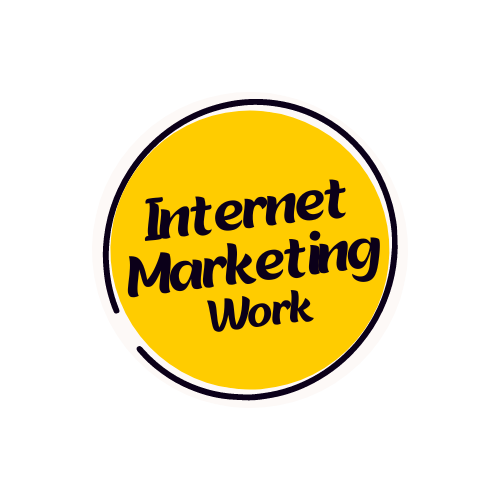In the age of flashy social media and instant messaging, email remains one of the most reliable and cost-effective channels for digital marketing. Whether you’re promoting a product, nurturing leads, or building customer relationships, email marketing campaign management is at the core of successful online marketing strategies.
But managing a winning email marketing campaign is not just about writing a few lines and clicking “send.” It involves a well-thought-out process, precise execution, and ongoing optimization. In this guide, we’ll break down everything you need to know about managing email marketing campaigns effectively — from planning and execution to analysis and optimization.
What is Email Marketing Campaign Management?
Email marketing campaign management is the process of planning, creating, executing, tracking, and optimizing email communications with a defined goal — typically to drive sales, improve engagement, or enhance brand awareness. It includes everything from designing emails to segmentation, automation, A/B testing, and performance analysis.
Effective campaign management ensures that your emails are:
Relevant to the recipients
Timely in delivery
Visually appealing
Action-oriented
Compliant with privacy regulations like GDPR and CAN-SPAM
Why Email Campaign Management Matters
With over 4 billion email users globally, email marketing remains a powerhouse in digital marketing. Here are a few reasons why campaign management is crucial:
Improves Engagement: Well-managed campaigns result in higher open and click-through rates.
Boosts Conversions: Targeted emails drive more qualified leads and conversions.
Strengthens Customer Relationships: Regular communication keeps your brand top-of-mind.
Increases ROI: Email marketing delivers an average ROI of $42 for every $1 spent.
Automates Communication: Scheduled and trigger-based emails save time while ensuring consistency.
The 5 Key Stages of Email Marketing Campaign Management
1. Strategy and Goal Setting
Before sending a single email, define your campaign’s objectives. Ask yourself:
What do you want to achieve? (e.g., more sales, registrations, downloads)
Who is your target audience?
What action should they take?
Common Email Marketing Goals:
Lead generation
Nurturing prospects
Promoting products/services
Customer onboarding
Re-engaging inactive users
Driving traffic to your website
Setting SMART goals (Specific, Measurable, Achievable, Relevant, Time-bound) helps you stay focused and measure success effectively.
2. List Management and Segmentation
Your campaign is only as good as the audience receiving it. That’s why managing your email list is essential.
Best Practices:
Use opt-in forms to collect subscribers legally.
Clean your list regularly by removing bounced or inactive contacts.
Segment your list based on:
Demographics (age, location)
Behavior (purchase history, website activity)
Engagement (opens, clicks)
Stage in the customer journey (new lead, returning customer, etc.)
Example: Sending a discount offer to first-time buyers vs. loyalty rewards to repeat customers ensures higher relevance and better results.
3. Designing and Writing Effective Emails
Your content and design are what convince users to take action.
Key Elements of a High-Performing Email:
Subject Line: It should be clear, catchy, and prompt curiosity. Keep it under 50 characters.
Preheader Text: A teaser that complements your subject line and boosts open rates.
Personalization: Use the recipient’s name and tailor content based on behavior or preferences.
Engaging Content: Use concise text, bullet points, and strong CTAs (Call-to-Actions).
Mobile Optimization: Over 60% of emails are opened on mobile devices — responsive design is a must.
Visual Appeal: Include branded colors, eye-catching images, and a clean layout.
Compliance: Include unsubscribe links and follow email regulations (GDPR, CAN-SPAM).
Pro Tip: Stick to one core message per email to avoid overwhelming the reader.
4. Automation and Scheduling
Email automation is a game-changer in campaign management. Instead of sending individual emails, automation lets you build workflows based on user behavior or timing.
Popular Email Automation Examples:
Welcome Series: Automatically triggered when someone subscribes.
Abandoned Cart: Sent when a user adds items to their cart but doesn’t complete the purchase.
Birthday or Anniversary Emails: Personalized messages on special days.
Drip Campaigns: A series of emails scheduled at intervals to nurture leads.
Automation tools like Mailchimp, HubSpot, ConvertKit, or ActiveCampaign let you set up intelligent workflows with drag-and-drop editors.
5. Testing, Tracking, and Optimization
The job isn’t over once you hit “send.” In fact, real success lies in measuring results and improving performance.
Key Metrics to Track:
Open Rate: Percentage of recipients who open your email.
Click-Through Rate (CTR): How many clicked on a link or CTA.
Conversion Rate: How many completed the desired action.
Bounce Rate: Emails that couldn’t be delivered.
Unsubscribe Rate: People opting out of your list.
A/B Testing Ideas:
Subject line variations
Email send time
CTA button color or placement
Email layout or format
Personalization vs. generic content
Make data-driven decisions by analyzing your reports regularly. Tweak content, update your list, and test new ideas for continuous improvement.
Common Email Campaign Mistakes to Avoid
Not Segmenting the Audience: Generic emails lead to low engagement.
Ignoring Mobile Optimization: A broken email layout can kill conversions.
Too Many Emails: Over-emailing can lead to unsubscribes and spam reports.
Neglecting Testing: Without A/B testing, you miss out on valuable performance insights.
Poor Subject Lines: If your subject line doesn’t grab attention, your email won’t get opened.
Tools That Help Manage Email Campaigns
Here are some reliable tools that simplify campaign creation, automation, and analysis:
Mailchimp – Great for beginners and small businesses
ConvertKit – Ideal for content creators and bloggers
ActiveCampaign – Strong on automation and CRM features
Sendinblue – Combines email with SMS campaigns
HubSpot – Perfect for integrated marketing automation and CRM
GetResponse – Excellent for webinars and landing pages alongside email
Each tool offers features like customizable templates, audience segmentation, real-time analytics, and automation flows.
Tips for Better Campaign Management
Create a content calendar for consistent scheduling
Repurpose high-performing emails into social posts or blog content
Use storytelling to make your emails emotionally engaging
Reward loyal subscribers with exclusive offers or early access
Ask for feedback through surveys or polls
Final Thoughts
Email marketing campaign management is not just about sending emails — it’s about sending the right message to the right person at the right time. With proper strategy, targeted content, and ongoing optimization, you can turn your email list into a powerful sales and engagement tool.
Whether you’re a small business owner, digital marketer, or freelancer, mastering the art of email marketing campaign management gives you a clear edge in today’s competitive landscape. It doesn’t require a huge budget — just smart planning, the right tools, and a willingness to keep testing and improving.


